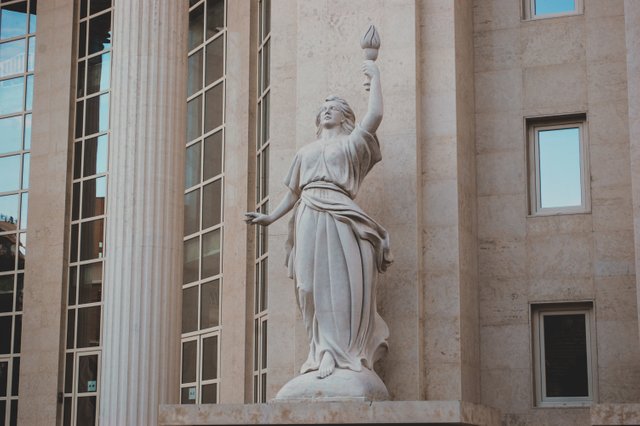Sparta was an ancient Greek military civilization that rose to dominance after defeating rival city-state Athens in the Peloponnesian War (431-404 B.C.). Spartan culture was built on state loyalty and military service. Spartan boys began a rigorous state-sponsored schooling, military training, and socializing program at the age of seven. The Agoge system, as it was known, emphasized duty, discipline, and endurance. Spartan women were educated and had greater prestige and independence than other Greek women, despite the fact that they did not serve in the military. All manual labor was done by a slave class, the Helots, because Spartan men were professional soldiers. Regardless of their military might, the Spartans’ dominance was short-lived: In 371 B.C., they were defeated by Thebes at the Battle of Leuctra, and their empire went into a long period of decline.

Society of Spartans
Sparta, also known as Lacedaemon, was an ancient Greek city-state that was predominantly located in what is now known as Laconia in southern Greece. The Spartans, or Spartiates, who were full citizens; the Helots, or serfs/slaves; and the Perioeci, who were neither slaves nor citizens, made comprised Sparta's population. The Perioeci, whose name means "dwellers-around," worked for the Spartans as craftsmen and traders, as well as building weaponry.
What if I told you that Spartan refers to someone who is self-restrained, simple, frugal, and austere. The Spartans, who valued brevity of speech, gave us the word laconic, which means pithy and brief.
The Agoge, a compulsory state-sponsored education system that emphasized obedience, endurance, courage, and self-control, was mandatory for all healthy male Spartan residents. Spartan males dedicated their lives to military service and continued to live communally into maturity. A Spartan was taught that allegiance to the state, including one's family, came first.
The Helots, whose name means "captives," were fellow Greeks from Laconia and Messenia who had been subjugated and enslaved by the Spartans. The Helots, who did all of the day-to-day jobs and unskilled labor essential to keep civilization running: they were farmers, domestic servants, nurses, and military attendants, the Spartans' way of life would not have been feasible without them.
In order to prevent uprisings, Spartans, who were outnumbered by the Helots, often treated them harshly and oppressively. The Helots would be humiliated by Spartans who would force them to get debilitatingly drunk on wine and then make a fool of themselves in public. (Self-control was a cherished characteristic among Spartans, therefore this technique was also intended to show young people how an adult Spartan should never act.) Mistreatment may be even more severe: Spartans were allowed to kill Helots for a variety of reasons, including being too smart or fit.
The Military of Sparta
Sparta was oriented on a martial culture, unlike other Greek city-states such as Athens, which was a center for the arts, learning, and philosophy. Only one occupation was permitted for male Spartans: soldier. The indoctrination into this way of life began at a young age. At the age of seven, Spartan boys left home and attended the Agoge, where they began their military training. The guys shared a home and had to live in close quarters. They were forced to compete in constant physical challenges (which could include violence), were given inadequate rations, and were required to become adept at stealing food, among other survival skills.
The Crypteia, a secret police organization whose primary objective was to scare the general Helot populace and murder those who were troublemakers, was formed from the teenage lads who displayed the highest leadership ability. Spartan males became full-time soldiers at the age of 20 and remained on active duty until they were 60 years old.
The Spartans' military training and discipline made them adept at fighting in a phalanx formation in the ancient Greek style. The army worked as a unit in the phalanx, forming a compact, deep formation.
a series of coordinated mass maneuvers No soldier was thought to be superior than another. A Spartan soldier, or hoplite, wore a massive bronze helmet, breastplate, and ankle guards when fighting, and carried a round bronze and wood shield, a long spear, and a sword. Spartan warriors were also famed for wearing red cloaks and having long hair.
Women in Sparta and Marriage
Spartan women were known for being strong and independent, with more liberties and power than their counterparts throughout ancient Greece. Female Spartans often obtained a formal education, but distinct from males and not at boarding schools, despite the fact that they had no role in the military. Females competed in athletic activities, such as javelin throwing and wrestling, as well as singing and dancing, in part to attract mates. Spartan women were allowed to own and manage property as adults. Furthermore, they were usually free of home obligations like as cooking, cleaning, and clothes preparation, which were usually left to the women.
Marriage was important to Spartans, as the state put pressure on people to have male children who would grow up to become citizen-warriors, and replace those who died in battle. Men who delayed marriage were publicly shamed, while those who fathered multiple sons could be rewarded.
In preparation for marriage, Spartan women had their heads shaved; they kept their hair short after they wed. Married couples typically lived apart, as men under 30 were required to continue residing in communal barracks. In order to see their wives during this time, husbands had to sneak away at night.